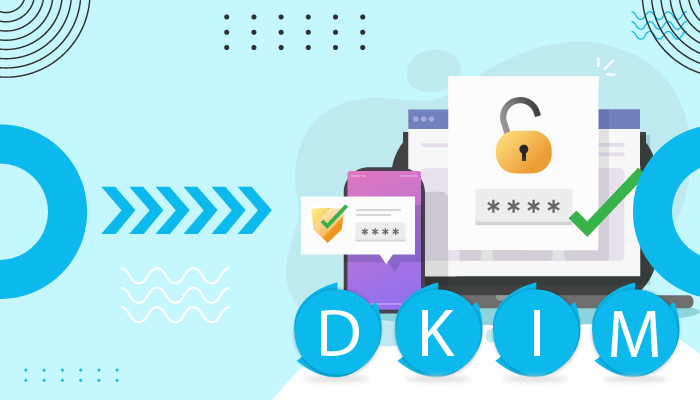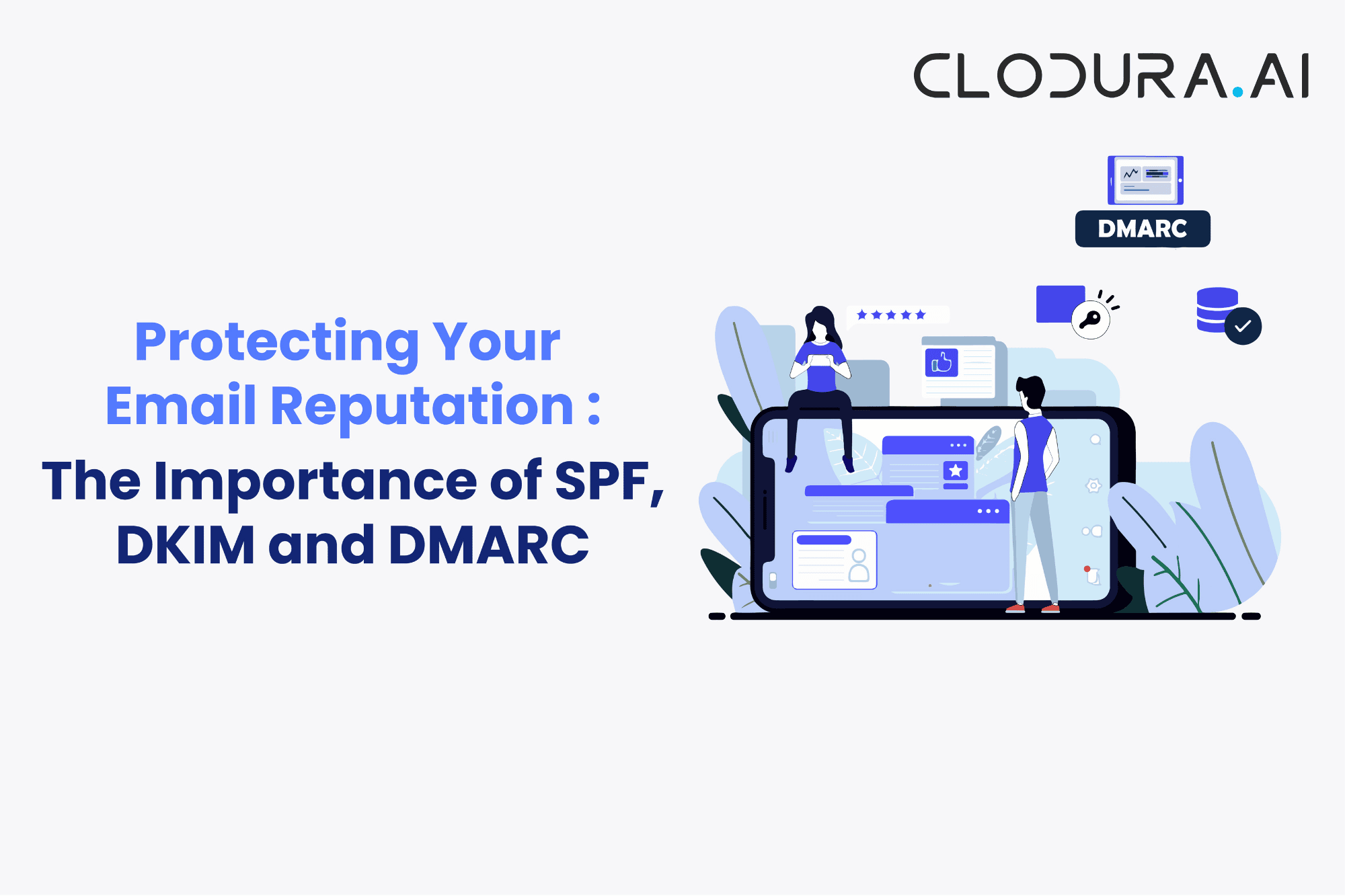Sender Policy Framework (SPF) is a crucial aspect of email authentication that helps prevent email spoofing and unauthorized usage of your domain name. When you send an email, the recipient's email server checks the SPF record of your domain to verify if the email is being sent from an authorized email server. SPF is essentially a DNS record that contains information about the authorized email servers for a particular domain.
If you don't have an SPF record, anyone can send emails using your domain name, which can damage your organization's reputation and lead to phishing scams, malware attacks, and other malicious activities. Therefore, it is critical to set up SPF records for your domain to ensure that only authorized email servers can send emails on your behalf.
Setting up SPF records is relatively easy and requires adding a TXT record to your domain's DNS settings. You can use various tools available online to create SPF records based on your email service provider's recommendations. For instance, if you use Google Workspace for your organization's email, you can generate an SPF record using Google's recommended settings and add it to your DNS settings.
In conclusion, SPF is a powerful tool that helps secure your email communication and protect your organization's reputation from being compromised. By implementing SPF records, you can ensure that only authorized email servers can send emails on your behalf, increasing email deliverability, and reducing the risk of fraudulent activities.
Why is DKIM important and what does it involve?
DomainKeys Identified Mail (DKIM) is a widely used email authentication method that offers an additional layer of security for email communication. DKIM utilizes cryptographic signatures to confirm that an email message was indeed sent by an authorized sender and that its content has not been modified in transit.
This verification process is crucial in preventing email spoofing and phishing attacks, which can have severe consequences, including financial losses and reputational damage. By utilizing DKIM to sign outgoing messages, organizations can significantly reduce the risk of such malicious activities and ensure that their email communication remains secure and authentic.
Moreover, DKIM is relatively easy to implement and can be set up by adding a TXT record to the organization's DNS settings. The TXT record contains information about the cryptographic keys used to sign outgoing messages and the email servers authorized to send messages on behalf of the domain.
By implementing DKIM, organizations can enhance their email deliverability and protect their reputation by providing a layer of trust and authenticity to their email communication. This assurance helps recipients to verify that the received message is indeed from the intended sender and has not been tampered with.

What role does DMARC play in email security, and why is it considered a crucial aspect of email authentication?
Domain-based Message Authentication, Reporting & Conformance (DMARC) is an email authentication protocol that aims to prevent email spoofing and protect an organization's brand reputation. DMARC works by authenticating emails and enabling domain owners to set policies for how to handle emails that fail authentication.
DMARC policies can range from monitoring the messages to rejecting or quarantining them, depending on the organization's preferences. Additionally, DMARC provides detailed reports on email authentication results, allowing organizations to track and analyze email activity.
Setting up DMARC policies is critical for preventing email phishing scams and protecting the organization's brand reputation. DMARC policies help ensure that emails sent on behalf of the organization are legitimate and trustworthy, which can significantly reduce the risk of email fraud and phishing attacks.
Moreover, DMARC settings allow domain owners to receive detailed reports on email activity, enabling them to identify potential vulnerabilities and take necessary actions to mitigate them. These reports can help organizations to enhance their email authentication infrastructure and improve their email deliverability.
What is the process for verifying if your email authentication configurations are accurate?
Checking your DMARC, DKIM, and SPF settings for a domain is crucial for ensuring that your emails are delivered to the intended recipients and protecting your organization's reputation. Luckily, there are various online tools and services available that can provide email authentication checks.
Some popular tools that you can use to verify your email authentication settings include MXToolbox, DMARC Analyzer, and Email Authentication Tester. These tools allow you to enter your domain into the input field and run a check to obtain a detailed report that shows the DMARC, DKIM, and SPF settings for your domain.
The report will also highlight any issues that were found, which may include authentication failures, configuration errors, or other vulnerabilities. It is important to carefully review the report to identify any areas that need improvement.
If any issues were identified, it is crucial to take corrective action immediately to rectify the problem. This could involve updating your SPF or DKIM settings, fixing configuration errors, or taking other necessary steps to enhance your email authentication infrastructure.

What are the steps to resolve email delivery issues using MXToolbox and ensure that your emails avoid being marked as spam?
Email delivery failures and spam folders can be frustrating for both individuals and businesses. Fortunately, MXToolbox is a tool that can help diagnose the problem. MXToolbox offers various email deliverability tools, including blacklists checks, SMTP diagnostics, and DNS lookups, which can help identify the root cause of email delivery failures. By using MXToolbox and addressing the issues identified, you can improve your email deliverability and avoid being marked as spam.
However, email deliverability isn't just about avoiding spam folders. Email fraud and phishing attacks are also major concerns. Cyber attackers often use email to trick individuals and businesses into divulging sensitive information or making fraudulent payments. To protect against these attacks, it's crucial to use email authentication protocols such as SPF, DKIM, and DMARC.
Now we will explain what these protocols are, how they work, and why they're essential for email security. We'll also provide step-by-step instructions on how to set them up correctly, ensuring that your email messages are delivered securely and reliably.
You may also view a tutorial on setting up DMARC and DKIM in Gsuite
If you're using Microsoft 365 and want to ensure the security and deliverability of your emails, it's important to implement SPF, DKIM, and DMARC.
You can learn how to do this by watching a tutorial on the topic.
To set up SPF for your domain, you can follow these steps:
Determine your email sending sources: Before setting up SPF, you need to determine the sources that send emails on behalf of your domain. This can include your email service provider, marketing automation tool, or any other application that sends emails on behalf of your domain.
Log in to your DNS hosting provider's website: Once you have identified the sources that send emails on behalf of your domain, log in to your DNS hosting provider's website and navigate to the DNS settings for your domain.
Create a new TXT record: Create a new TXT record with the following information:
Name: Leave blank or use the "@" symbol to indicate the root domain.
Value: "v=spf1 include:[sending source domain] ~all" (replace "[sending source domain]" with the domain name of your email sending source). If you have multiple sending sources, you can include them by separating them with a space.
Save the DNS record: Once you have entered the required information, save the DNS record.
Test your SPF record: After setting up your SPF record, it's important to test it using an online tool like MXToolbox or SPF Checker. These tools will tell you whether your SPF record is set up correctly and whether it's being enforced.
By correctly setting up SPF, you can help prevent email spoofing and improve the deliverability of your emails.
To set up DKIM for your domain, you can follow these steps:
Generate a DKIM key pair using your email server software or a third-party tool. This will create a private key that will be used to sign your outgoing emails, and a public key that will be published in a DNS record to verify incoming emails.
Log in to your DNS hosting provider's website and navigate to the DNS settings for your domain.
Create a new TXT record with the following information:
Name: default._domainkey (you can replace "default" with a name of your choice)
Value: v=DKIM1; k=rsa; p=MIGfMA0GCSqGSIb3DQEBAQUAA4GNADCBiQKBgQ... (replace the "p" value with the public key generated in step 1)
Save the DNS record.
Configure your email server to sign outgoing messages with the private key generated in step 1.
Test your DKIM setup using an online tool like DKIM Validator to ensure that your DKIM record is set up correctly and being enforced.
Once you have set up both SPF and DKIM correctly, your emails will be less likely to end up in spam folders and will be more trusted by email providers, reducing the risk of phishing and email fraud.
To set up DMARC, you can follow these steps:
Use a DMARC record generator tool to create a DMARC record for your domain. The record should specify a policy for how email receivers should handle messages that fail authentication checks. The policy can be set to "none" for monitoring only, "quarantine" for putting messages in the spam folder, or "reject" for blocking messages entirely.
Once you have generated the DMARC record, you'll need to add it to your DNS. To do this, log in to your DNS hosting provider's website and navigate to the DNS settings for your domain.
Create a new TXT record with the following information:
Name: _dmarc (some providers may require _dmarc.yourdomain.com instead)
Value: v=DMARC1; p=none; rua=mailto:youremail@yourdomain.com; ruf=mailto:youremail@yourdomain.com; sp=none
Save the DNS record.
Test your DMARC setup using an online tool like DMARC Analyzer. These tools will tell you whether your DMARC record is set up correctly and whether it's being enforced.
By setting up DMARC along with SPF and DKIM, you can greatly reduce the risk of email fraud and phishing attacks and increase the deliverability and trustworthiness of your emails.
FAQs
Q: What is SPF?
A: Sender Policy Framework (SPF) is an email authentication protocol that helps prevent email spoofing and unauthorized usage of your domain name.
Q: Why is SPF important?
A: SPF is important because it ensures that only authorized email servers can send emails on your behalf, increasing email deliverability, and reducing the risk of fraudulent activities.
Q: How do you set up an SPF record?
A: Setting up an SPF record involves adding a TXT record to your domain's DNS settings. You can use various tools available online to create SPF records based on your email service provider's recommendations.
Q: What is DKIM?
A: DomainKeys Identified Mail (DKIM) is an email authentication method that utilizes cryptographic signatures to confirm that an email message was indeed sent by an authorized sender and that its content has not been modified in transit.
Q: Why is DKIM important?
A: DKIM is important because it provides a layer of trust and authenticity to email communication, helping to prevent email spoofing and phishing attacks.
Q: How do you set up DKIM?
A: Setting up DKIM involves adding a TXT record to the organization's DNS settings. The TXT record contains information about the cryptographic keys used to sign outgoing messages and the email servers authorized to send messages on behalf of the domain.
Q: What is DMARC?
A: Domain-based Message Authentication, Reporting & Conformance (DMARC) is an email authentication protocol that aims to prevent email spoofing and protect an organization's brand reputation.
Q: Why is DMARC important?
A: DMARC is important because it helps ensure that emails sent on behalf of the organization are legitimate and trustworthy, which can significantly reduce the risk of email fraud and phishing attacks.

